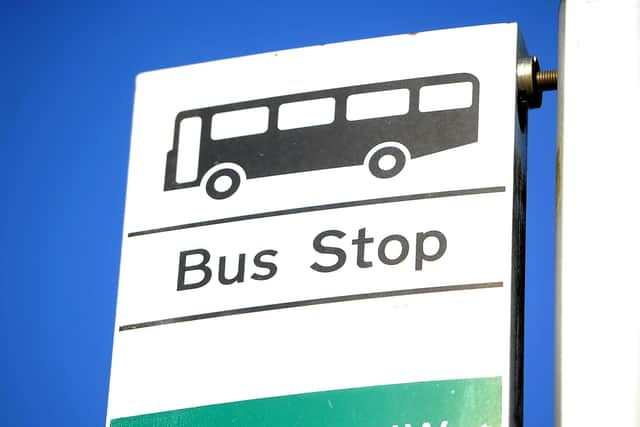Here’s what major improvements could be made to East Sussex bus services
and live on Freeview channel 276
On Monday (October 25), Cllr Claire Dowling, East Sussex County Council’s lead member for transport and environment, is set to consider whether to sign off on the aims and objectives of the authority’s Bus Service Improvement Plan (BSIP), before its submission to government at the end of this month.
Drawn up in response to the government’s Bus Back Better strategy, the plan sets out the council’s strategy to significantly increase bus use around the county by improving the overall network, making it more reliable, more affordable and more accessible.
‘Highly ambitious plan’


Advertisement
Hide AdAdvertisement
Hide AdIn a report to be considered by Cllr Dowling, a council officer said: “The Council’s mission as a local transport authority is to ensure that East Sussex residents and visitors enjoy the highest possible quality bus services that provide a frequent and comprehensive choice, reduce congestion, and make a positive contribution to better air quality and decarbonisation.
“This mission is supported by our authority’s bus operators who will play a key role in its delivery.
“The East Sussex BSIP is a highly ambitious plan that seeks to stimulate and drive significant improvements to bus services across the local authority area and the wider region.”
While its overall aims may be straightforward, the plan itself is a wide-ranging and complex document.
DDRT schemes
Advertisement
Hide AdAdvertisement
Hide AdPerhaps the biggest change proposed within is the replacement of many traditional bus routes with Digital Demand Responsive Transport (DDRT) schemes.
In simple terms, these DDRT schemes would see fixed bus routes replaced with routes which change day-to-day based on passengers booking pick ups and drop offs.
In total, the plan would lays out proposals for 13 such schemes, which would cover the whole of the county apart from Eastbourne and Hastings (although both towns would be expected to have DDRT schemes operating within parts of them).
Many of the non-DDRT routes which remain could also see some significant changes, with the services to run more often and into the evenings in many cases.
Advertisement
Hide AdAdvertisement
Hide AdThese amended services would be expected to run at least hourly, which the council intends to be its new minimum standard. This minimum standard would include evening services as well.
Another major change proposed would be the introduction of a discount scheme for under-30s, similar to the older persons’ bus pass. This could see younger people pay an annual fee (between £250 to £350 depending on their age) for unlimited bus travel within the county.
The plan also proposes measures to make buses more punctual. As part of this, the plan would see the council invest in ‘bus priority’ works across the county, intended to make buses run more efficiently. These could include new bus lanes or traffic light priority works (where green lights favour buses) at key junctions.
Key transport corridors and mobility hubs
The plan also lays out proposals for focused investment along five ‘key transport corridors’: Brighton to Tunbridge Wells, via Uckfield and Crowborough; Brighton to Peacehaven; Hailsham to Eastbourne, via Polegate; Hellingly to Eastbourne, via Stone Cross and Langney; and Eastbourne to Hastings, via Bexhill.
Advertisement
Hide AdAdvertisement
Hide AdOn top of this, the plan lays out proposals for the council to create 11 ‘mobility hubs’ in towns across the county, which would act as interchanges both for buses and other forms of transport.
These hubs would be in: Bexhill; Crowborough; Hailsham; Heathfield; Lewes; Newhaven; North Hailsham; Polegate; Rye; Seaford; and Uckfield.
As part of this, the council’s current plans to improve Uckfield Bus Station could be expanded.
The council would also invest in bus stops and shelters, to make them more attractive and provide clearer information to passengers.
Advertisement
Hide AdAdvertisement
Hide AdThe overall BSIP comes in response to the government’s Bus Back Better strategy, which requires councils to create such documents to secure funding.
If approved and adopted, the strategy would begin in 2022/23. For its first year, the council’s strategy would focus on bringing bus usage back up to pre-pandemic levels and assessing how demand may have changed as a result.
In the long term, the aim would be to increase passenger numbers and to significantly increase the bus network’s performance against a range of criteria